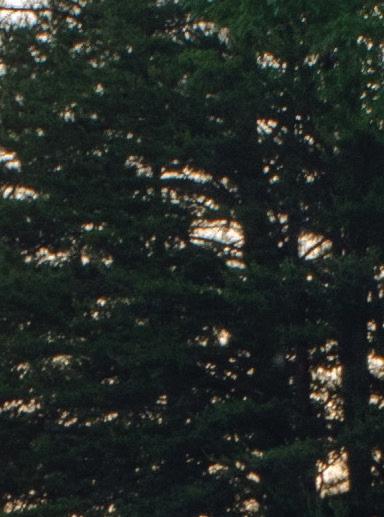


































































We’re going to let you in on a secret. Billionaires have billions because they know value is not increased by an in ated price. ey avoid big name markups, and aren’t swayed by ashy advertising. When you look on their wrist you’ll nd a classic timepiece, not a cry for attention–– because they know true value comes from keeping more money in their pocket. We agree with this thinking wholeheartedly. And, so do our two-and-a-half million clients. It’s time you got in on the secret too. e Jet-Setter Chronograph can go up against the best chronographs in the market, deliver more accuracy and style than the “luxury” brands, and all for far, far less. $1,150 is what the Jet-Setter Chronograph would cost you with nothing more than a di erent name on the face.


With over two million timepieces sold (and counting), we know a thing or two about creating watches people love. e Jet-Setter Chronograph gives you what you need to master time and keeps the super uous stu out of the equation. A classic in the looks department and a stainless steel power tool of construction, this is all the watch you need. And, then some. Your satisfaction is 100% guaranteed. Experience the Jet-Setter Chronograph for 30 days. If you’re not convinced you got excellence for less, send it back for a refund of the item price. Time is running out. Now that the secret’s out, we can’t guarantee this $29 chronograph will stick around long. Don’t overpay to be underwhelmed. Put a precision chronograph on your wrist for just $29 and laugh all the way to the bank. Call today!

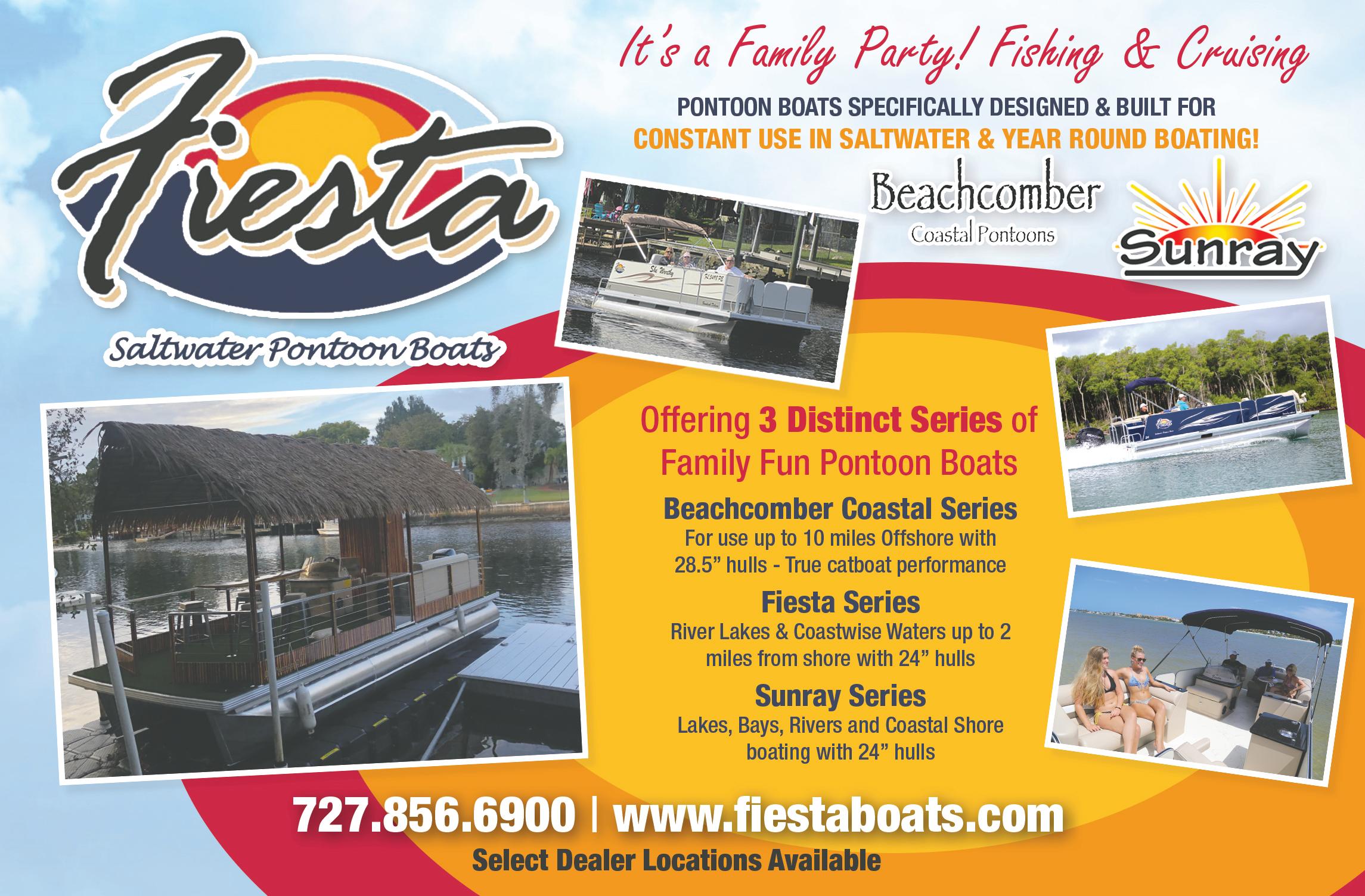


 By Nick Carter
By Nick Carter
Winter is the best time to sh,” said Capt. Chris Cameron, “the only problem is the weather.”
Capt. Cameron is owner/operator of Fired Up Fishing Charters out of Cocoa Beach, Fla. He said it was tough to nd good weather windows this November and early December, but that o shore shing is primed to re o like a Space Coast rocket whenever conditions stabilize.
Winter on Florida’s Atlantic Coast can be spectacular because of all the migratory species that push down to overwinter in milder temperatures. King sh, cobia, black n tuna, sail sh and others are all hunting the reefs about 18 miles o Port Canaveral. e key to the shery is menhaden.
“ is time of year, you get these huge baitballs,” said Capt. Cameron, “and there are all these sh following the bait around. You nd sh where you nd ‘bunka’ congregating on the reefs.”
Cameron is a transplant from Long Island, New York, and even a er more than two decades living and shing Florida’s east coast, he still refers to menhaden as “bunka,” which is Yankee dialect for bunker, which is what they call pogies up where boats are winterized this time of year.
“On good days, when you can get o shore and the water is clean, we might catch a limit of kings, a couple cobia, a couple black ns and hopefully a sail sh,” Cameron said. Even with 2022’s tightening of cobia regs, that’s a fun and delicious mixed bag to ll the freezer.

At places like Pelican Reef and 8A Reef, where depths range from 75 to 85 feet, Cameron nds the bait and then goes to work slow trolling live baits on double-hook stinger rigs and 20-pound line and tackle. He said he pulls baits at about 1 knot, which allows them to swim along naturally.


“ e thing with slow trolling is you never know what you’re going to get,” said Cameron. “It could be a big king, a sail sh, a cobia or a shark.”
Pitch rods are kept ready in case a cobia shows up on the surface. Cameron said he’s learned from experience not to over-stimulate cruising cobia by throwing multiple lines at once. Usually, clients can convince cobia to bite with a one-two punch. ey keep a squid-tipped bucktail ready for a quick cast. If that doesn’t draw a strike, it allows time to slap a live bait on the second rig, which is a simple 5/0 circle hook.
Shrimp boats are another option Cameron seeks out this time of year. Although chasing them can be a bit of a time gamble, since they are usually 25 miles o shore over 200 feet of water, they can be extremely productive.
“If you see a shrimp boat o in the distance or spot one on the radar, it’s almost always worth a shot,” Cameron said. “When they dump their bycatch in the morning, it pulls everything up.”
Fishing shrimp boats can be short-lived, but
it can also provide fast action for the same species that come o the reef. For this bite, Cameron beefs up to 6500 spinning gear and 50-pound braid and 50-pound mono leaders. He keeps four pitch rods ready, two with bucktails and two with live baits, because the bite can turn into sight shing

in a hurry. Meanwhile, he’ll search with freelined pogies on a knocker rig.
Contact Capt. Chris Cameron and Fired Up Fishing Charters through their website at redupcharters.com.

Winter’s cold fronts consolidate wahoo to their preferred temperature ranges across their range. is makes them easier to target than at any other time of year. e following is a short list of very good destinations for wintertime wahoo.


San Salvador, Bahamas: Way out in the Atlantic in the southern Bahamas, the waters o San Salvador hold one of the best wahoo sheries in the world. Peak wahoo season is December through April, when hordes of ’hoos migrate to the area’s warm waters. e island might just be the

best place on the planet for a shot at a triple-digit wahoo, and the right conditions can yield fast action for 50-pounders, as well.

Within a short 10-mile run o the island, a seamount rises to 180 feet from 4,000 feet of water. is hump is a well-known feature, where wahoo congregate to feed on schools of small tuna. e remoteness of San Salvador keeps shing pressure in check, but it also makes this one of those bucketlist trips you plan ahead for.
Galveston, Texas: O shore humps out of Galveston, Texas also lay claim to some of the best wahoo shing in the world, and every winter anglers connect with giants. is shery, however, is reserved for anglers with the gumption to make 100-mile overnight runs to features like East and West Flower Gardens to catch the morning bite.
Windows of good weather and big, fast boats are a requirement to reach the shing grounds at the edge of the Continental shelf, where wahoo pile up with bait sh on steep depth changes of rock structure.
Murrell’s Inlet, South Carolina: O the South Carolina coast, cooling water temperatures con ne wahoo to the warm water at the edge of the Gulf Stream. is makes them much easier to target than when they are spread out in summer.
Depth changes and structure at the edge of the Continental Shelf, combined with warm 70 to 80 degree waters of the Gulf Stream can be found 50 or 60 miles o the coast. ese structures hold bait sh in the temperature range where wahoo are comfortable. Covering lots of water with high-speed spreads trolls up the best wahoo of the year, every year.
Venice, Lousiana: It seems everything o shore of Louisiana is about the oil rigs, and in wintertime the oil rigs are all about wahoo. e key to nding wahoo on the rigs is nding the right temperature range, and the magic number is 60 degrees. Wahoo congregate and feed around the rigs where there is bait and water temperatures of at least 60 degrees.
One of the great things about Venice is there are deep-water rigs relatively close to shore at just 15 or 20 miles, which means it’s possible to nd a good weather window and go. e Louisiana coast also boasts some of the best catch rates for wahoo in the world, and 50- to 60-pound sh are the norm.
The very best hunting knives possess a perfect balance of form and function. They’re carefully constructed from fine materials, but also have that little something extra to connect the owner with nature.

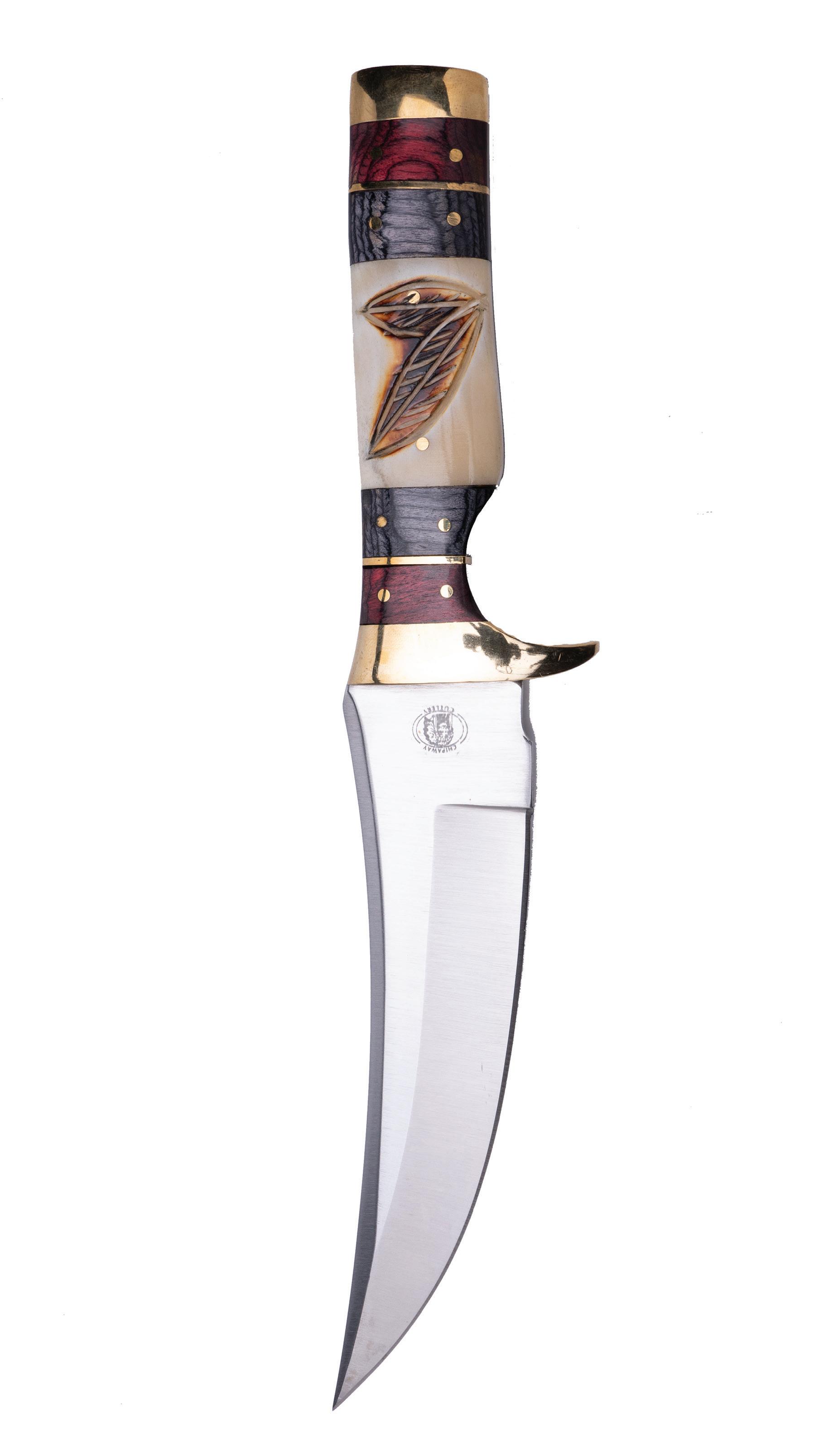
If you’re on the hunt for a knife that combines impeccable craftsmanship with a sense of wonder, the $79 Huntsman Blade is the trophy you’re looking for.
The blade is full tang, meaning it doesn’t stop at the handle but extends to the length of the grip for the ultimate in strength. The blade is made from 420 surgical steel, famed for its sharpness and its resistance to corrosion.


The handle is made from genuine natural bone, and features decorative wood spacers and a hand-carved motif of two overlapping feathers— a reminder for you to respect and connect with the natural world.
This fusion of substance and style can garner a high price tag out in the marketplace. In fact, we found full tang, stainless steel blades with bone handles in excess of $2,000. Well, that won’t cut it around here. We have mastered the hunt for the best deal, and in turn pass the spoils on to our customers.
But we don’t stop there. While supplies last, we’ll include a pair of $99 8x21 power compact binoculars and a genuine leather sheath FREE when you purchase the Huntsman Blade.

Your satisfaction is 100% guaranteed. Feel the knife in your hands, wear it on your hip, inspect the impeccable craftsmanship. If you don’t feel like we cut you a fair deal, send it back within 30 days for a complete refund of the item price.

Limited Reserves. A deal like this won’t last long. We have only 1120 Huntsman Blades for this ad only. Don’t let this beauty slip through your fingers. Call today!
“This knife is beautiful!” — J., La Crescent, MN
“The feel of this knife is unbelievable...this is an incredibly fine instrument.” — H., Arvada, CO

With grouper season over, it’s time to switch gears and concentrate on other species. is is the time of year to size down and go for the snappers. Depending on water temps, it’s also a good idea to keep a light line out for any pelagics that swim by.
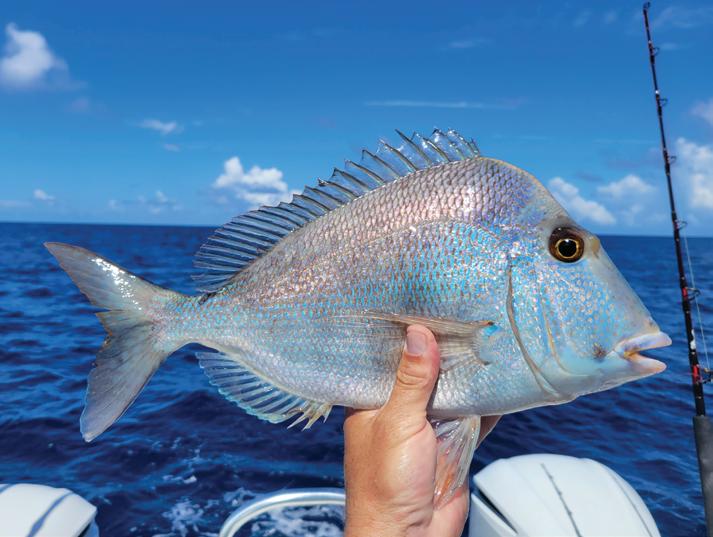

I love yellowtail and a mangrove snappers, but I really like jolt heads, trigger sh, pinkies, black seabass and hog snapper. I treat bottom shing like I’m going (organic) grocery shopping. First and foremost, I don’t shop on every aisle of the grocery store. I go down the aisles that contain the items I really want. e best groceries come from di erent places on the bottom and from di erent depths.
Farther north up the Atlantic coast there are a lot of beeliners (vermilion snapper) taking the place of yellowtails. In this mix will be trigger sh, which I absolutely love! Beeliners and trigger sh have one thing in common: the largest ones of the school stay higher in the water column. is is why I like to sh a level-wind reel versus a spinning reel with small circle hooks for this style of snapper shing. I start dropping one “strip” of the reel
at a time until I get down to the sh. A “strip” is the distance of raising the rod up with your thumb o the spool, and putting your thumb back on the spool. Simply let your thumb o the spool and let it fall in 10-foot “strips” while raising the rod tip upwards. Count the strips it takes to get down to the bites. Four strips will be approximately 40 feet deep. Note where you feel the rst bite. is will usually be the largest triggers and beeliners in the school. If you stop getting bites or you’re only catching smaller sh, let this same tackle go deeper or all the way to the bottom. is is where you’ll catch the jolt heads, black sea bass, mangroves and hogs.
I use a two-hook “chicken rig” made of 50-pound uoro with small circle hooks and a 3-ounce bank sinker. I bait it with small pieces of squid. A small 2- or 3-ounce jig works with the same tackle as the weight instead of a bank sinker. is is especially e ective on large triggers. Just replace the treble hooks or single



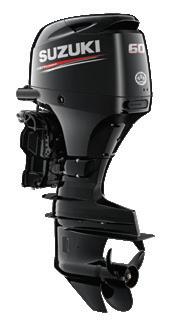



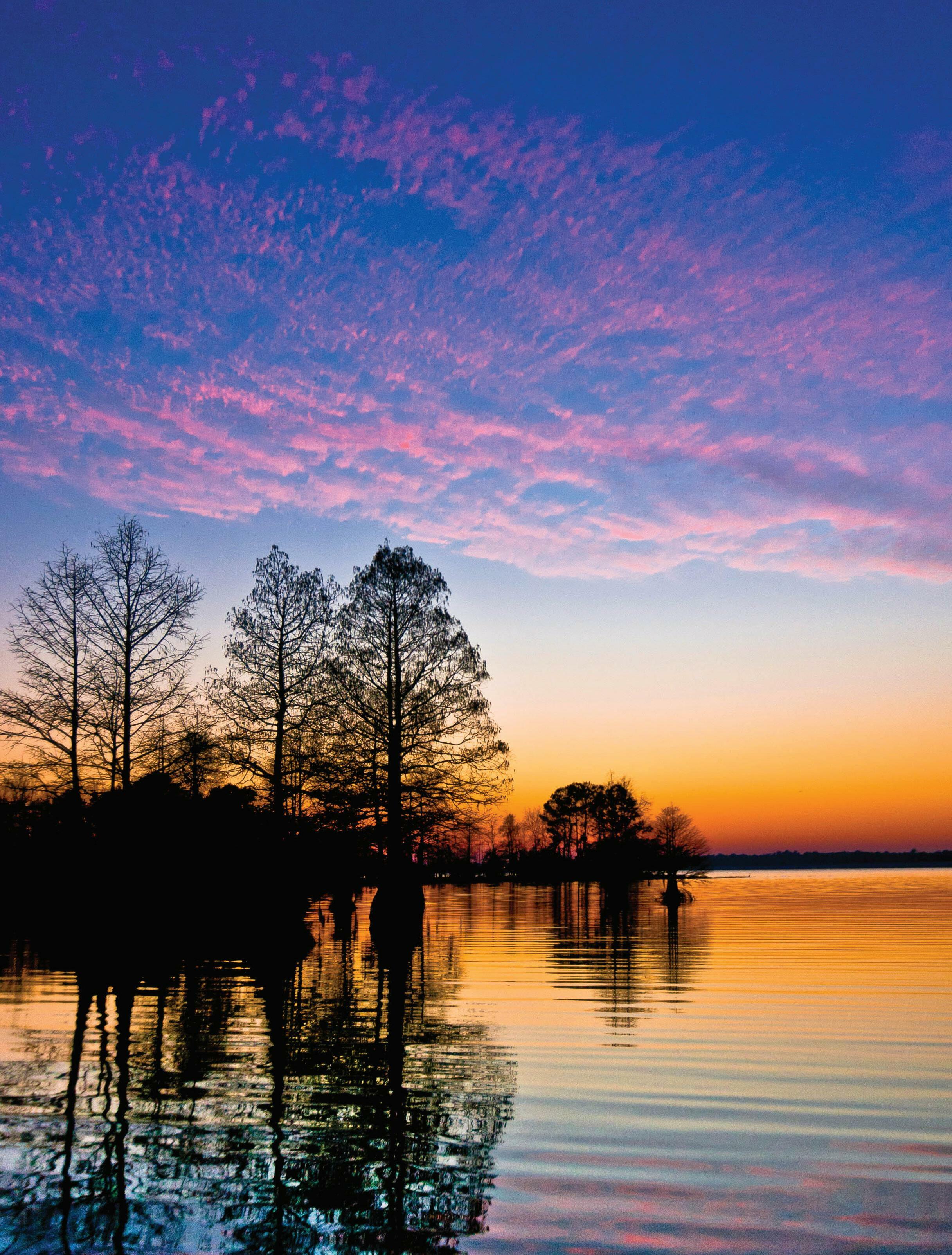
J hooks on the back of the jig with small circle hooks and tip with a small piece of squid.
I could go on and on about this style of shing. e limits are pretty good and the reward comes at the table. It is a good time of year to take youngsters out, because this style of shing produces lots of action, and it’s not heavy-duty grouper shing. Little ones love a trip to the “organic grocery store.”
See more from Tim Barefoot at www.barefootcatsandtackle.com and check out a video explaining this style of shing at https://bit.ly/3YcVzV1.









Wprivileged to guide clients there. We have broken many personal bests, and I get goosebumps every morning I launch the boat because I know the quality of sh.
Headwaters Lake is a 10,000-acre manmade lake in Indian River County adjacent to the well-known Stick Marsh and Farm 13. Prior to ooding the land, the FWC and the St. Johns River Management District created habitat with numerous underwater structures, ooded timber, vegetation and 30-foot-deep pits. ere were already existing ponds and pits on the property that contained resident bass, and nearly a million Florida strain bass were stocked along with bluegill, redear sun sh and crappie. ere are thousands of acres of submerged vegetation, mostly hydrilla, along with acres of cattails, spatterdock pads and hyacinth mats that are super fun to sh.
In central Florida, January and February are primetime, when bass are in full prespawn mode and waves of females move up to the ats to spawn. Air and water temperatures drop considerably a er cold fronts. Severe cold fronts a ect the ckle Florida strain bass, but not for long. Usually two days post front, conditions warm up and sh eat well again. ese weather changes transition bass and bait sh from summer patterns into fall and winter staging areas. ey feed heavily on shad and other forage and stage near the spawning ats.


When full moons and 60-degree water temps coincide, bass move onto the ats. ey spawn in waves. Spawning sh select isolated hydrilla clumps, reeds and the bases of pad stems to fan out beds. Hard sand bottom is key. Use sonar to locate hard bottom or stick your rod tip into the water to feel the bottom. If your rod tip pushes into mud, keep moving until you nd sand and then search for isolated cover.

My other primary focus is staging areas. Staging sh eat well and are plump as they congregate to wait for prime conditions to move up and spawn. New sh constantly come and go using the same areas, so they are extremely productive this time of year.
Ditches and canals on Headwaters are highways that bass and bait sh utilize to stage. e intersections and mouths of these canals are high percentage areas to locate schools of sh. Find a canal with nearby ats as well as pits or deeper water for bass to retreat to, and you will nd sh. ey stage on tapering drop o s, mouths of intersections, deep ditches and on main-lake points to ambush bait. I target staging sh with 6- to 8-inch paddletails, glidebaits, Rat-L-Traps, jerkbaits, chatterbaits, prop baits, Whopper Ploppers, spinnerbaits, stick worms and speed worms.
Contact Capt. Ricky Congero through his website at www.blackcloud shing.com or call him at (407) 693-6153.

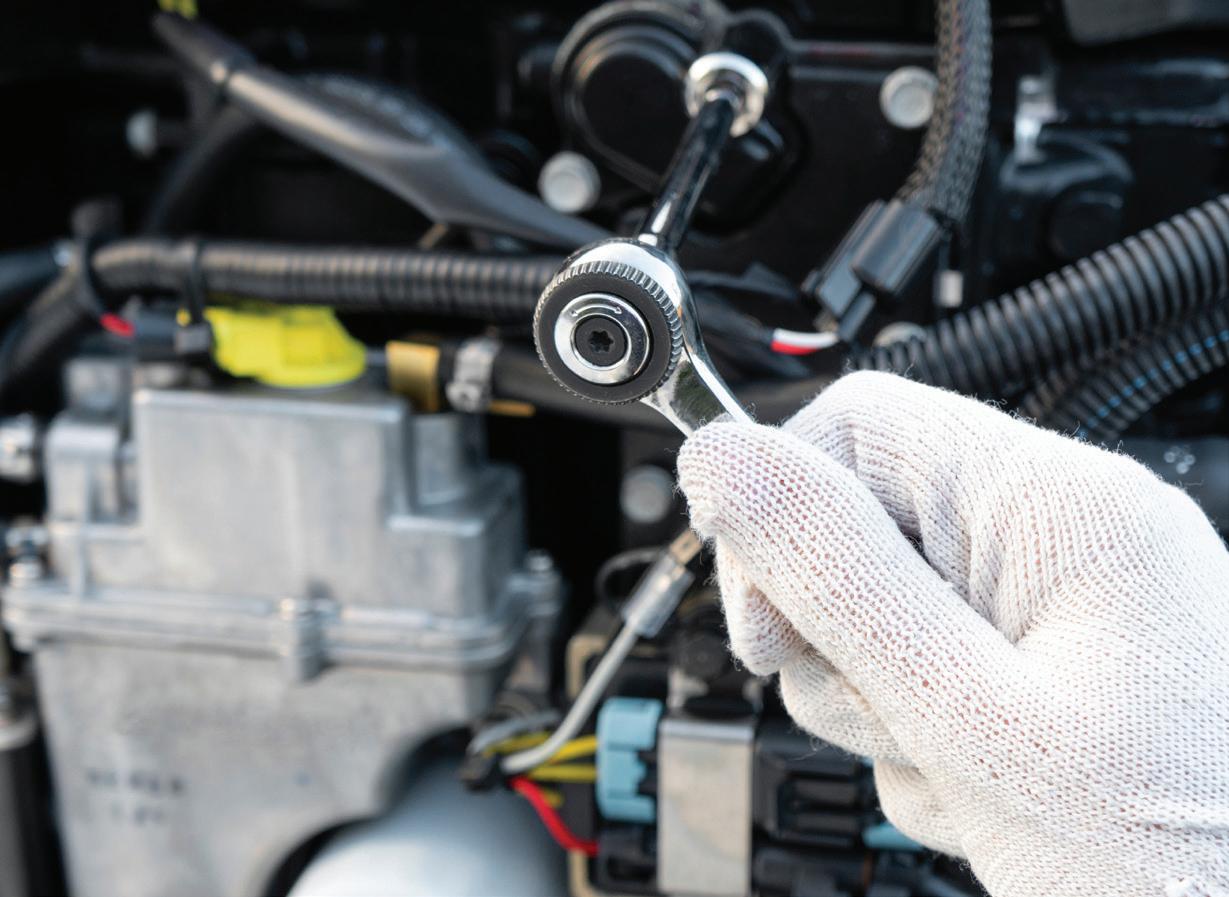

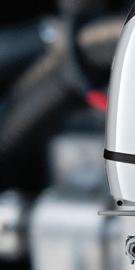





Technical schools charge tens-of-thousands in tuition. With the Mastry Suzuki RePower TTP (Technician Training Program), you will work with and learn from factory certified technicians and participating in the Suzuki on-line training course all while earning an hourly wage. After completing the Suzuki on-line training course and earning your Suzuki Certification you will be eligible for the Mastry Suzuki RePower Tenured Technicians Bonus Program.



Suzuki RePower Tenured Technicians
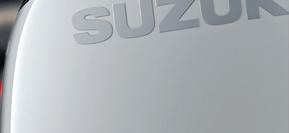
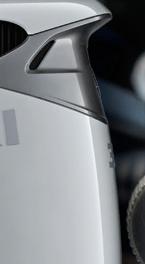



After joining a Mastry Suzuki RePower Center as a certified technician, every month you will accrue $1,000 in bonus opportunity. After one full year of service you will be tenured and eligible to receive all 12 months of accrued bonuses, or $12,000.


As a Mastry Suzuki RePower Tenured Technician along with your regular pay, each month you will be eligible for a $1,000 additional bonus.


At every Mastry Suzuki RePower Center, Certified Technicians are held in the highest regard. Join a passionate team of professionals with the common goal of excellence through constant improvement. With 12 locations across Florida there is a Mastry Suzuki RePower Center near you that wants to appreciate you and your abilities.

Mastry Engine Center
Clearwater, Florida 800-545-4574
Twin Screws Marine Fort Myers, Florida 239-330-3387


Innovation Marine Corp. Sarasota, Florida 941-355-7852





Marina One Deerfield Beach, Florida 954-421-2500
Bayfront Yacht Works Sarasota, Florida 941-349-9449
On Site Marine Ruskin, Florida 813-727-5403
Boat Services Group Key West, Florida 305-320-0555
McKenzie Marine St. Augustine, FL 32084 904-770-2488

Lou’s Marine, Inc. Gulf Breeze, Florida 850-932-0701
Atlantic Marine Store Hialeah, Florida 305-826-2202
Custom Marine Service Panama City, FL 850-872-9191



Oyster City Suzuki Apalachicola, Florida 850-653-8030


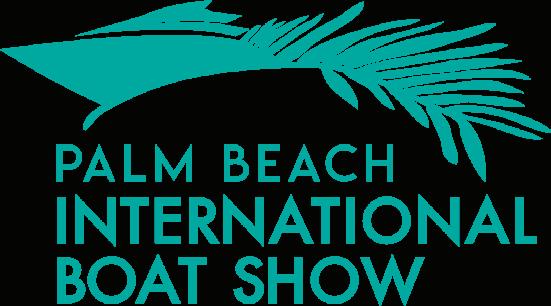

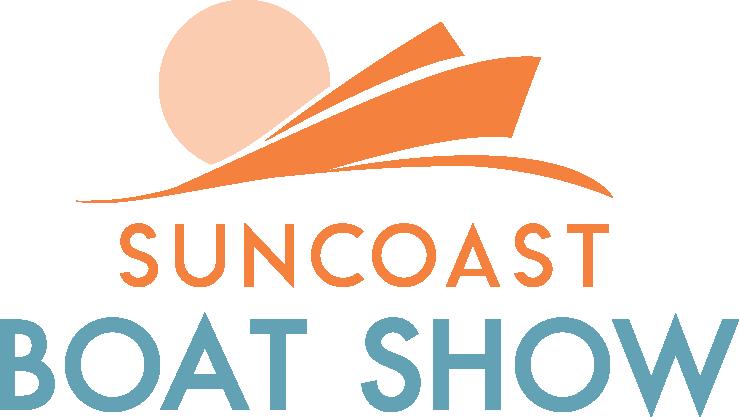



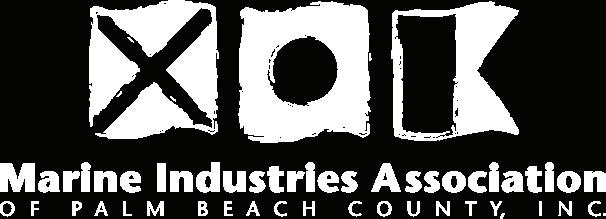


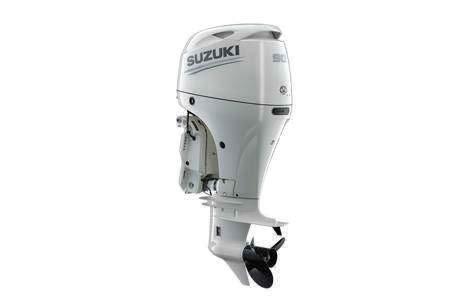


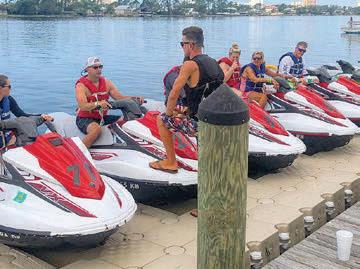


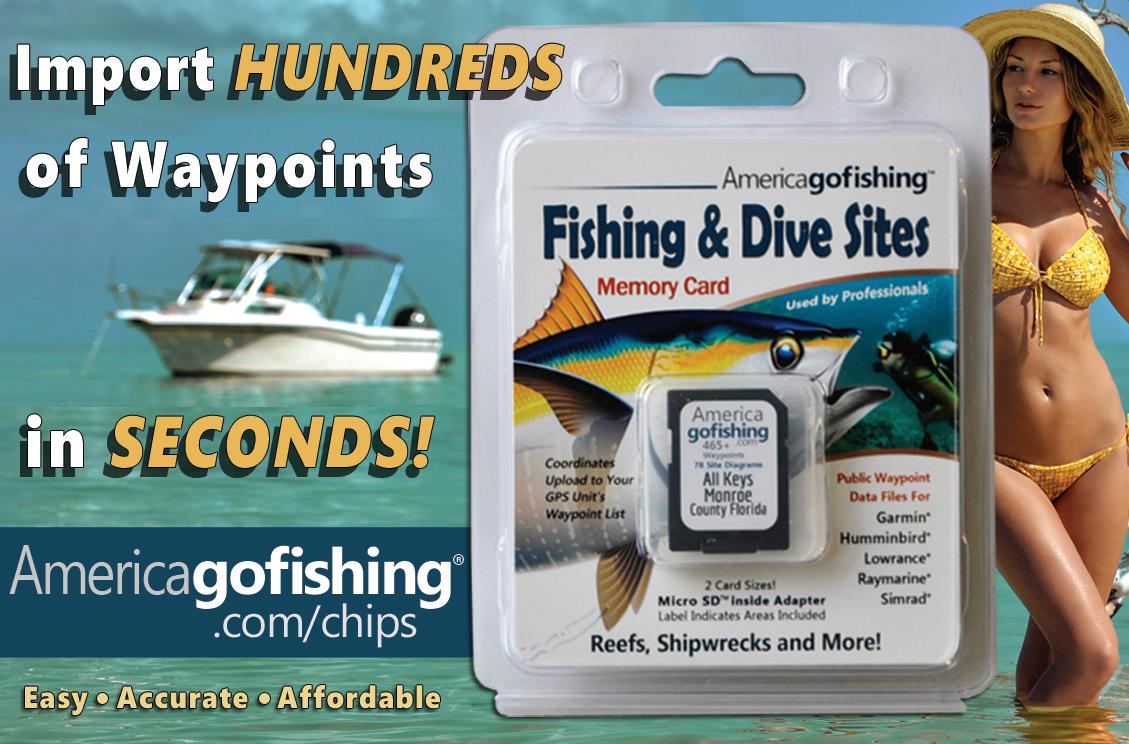
The FWC banned recreational harvest of Atlantic short n mako sharks by setting the recreational bag limit at zero during its Nov. 30-Dec. 1 commission meeting. e previous bag limit for recreational anglers was one mako per angler per day, with a limit of two sharks per boat. In a press release, FWC indicated the rule would make regulations in Florida waters consistent with federal regulations and address over shing of short n makos in support of U.S. and international e orts to manage the species. Commercial harvest of short n mako is already prohibited in state and federal waters.
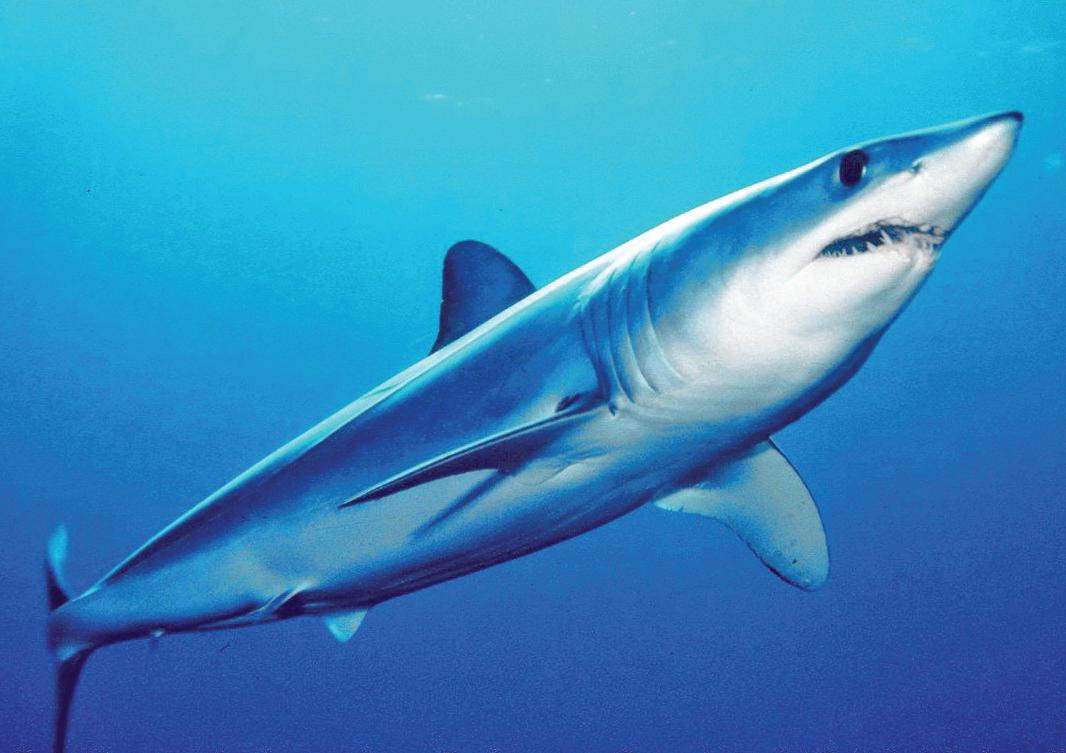
For more information, visit MyFWC.com.

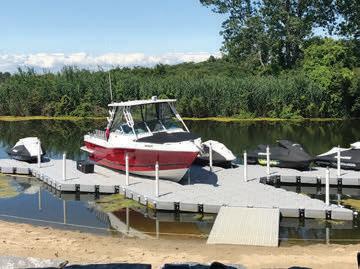


Presenting Sponsor: $3,500

•Large logo displayed on flyers & tournament banner
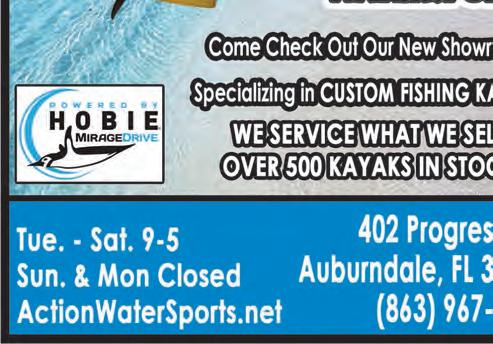

•Recognition on social media and website
•Trapper Station– opportunity to create promotional display at designated station
•Your representative will release clays and complete scorecard for each player at designated station

•Display booth & banner at the registration area
•Includes 6 Clay Shooters and 6 lunch tickets
•Speak at luncheon & announce tournament award
Gold Sponsor: $1,750
•Logo on flyers & tournament banner
•Large logo on score sheet displayed in each golf cart
•Recognition on social media and website
•Includes 4 Clay Shooters and 4 lunch tickets

Silver Sponsor: $1,000
•Logo displayed on flyers & tournament banner
•Large logo on score sheet displayed in each golf cart
•Recognition on social media and website
•Includes 3 Clay Shooters and 3 lunch tickets
Clay/Ammo Sponsor: $550
•Logo on flyers & tournament banner
•Recognition on social media and website
•Includes 2 Clay Shooters and 2 lunch tickets

Lunch Sponsor: $1,600
•Logo displayed on flyers & tournament banner
•Custom sign with logo at beverage stations
•Representative to serve beverages
•Representative to serve beverages during lunch
•Promotional display during lunch
•Recognition on social media and website
•Includes lunch for 4 people Lunch Sponsor: $1,600
•Logo displayed on flyers & tournament banner
•Custom sign with logo at beverage stations
Shooting Station Sponsor $200 (per station)
Registration Cost: (Make checks payable to scenic Sumter Heritage Byway) Team (4) Entry: $850 Individual: $225 (This includes 100 rounds of ammo per person, golf cart rental, clays, breakfast and BBQ lunch)
Event Schedule:
8:00 am - Registration & Breakfast 9:00 am - Mandatory Safety Meeting 9:15 am - Flight Kick Off 12:00 pm - Lunch & Awards
Register at www.sumterbyway.com. For more details regarding the sponsorship opportunities or general event questions, contact Dawn Cary at sumterbyway@gmail.com or call her at 352.267.8801
First





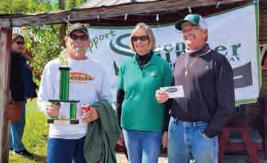
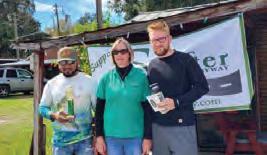

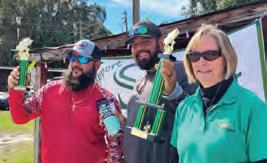

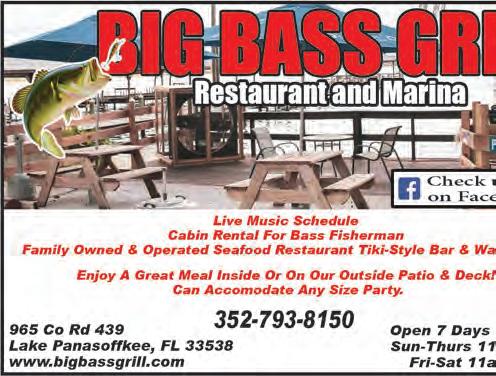



Second

Third
Fifth

Homosassa Area

1-Capt. Rick Burns 352-201-6111 8975 W. Halls River Rd • Homosassa, FL www.RealBurns.com
Lake Panasoffkee
2- Pana Vista Lodge 352-793-2061 3417 Co Rd 421• Lake Panasoffkee, FL www.panavistalodge.com
3- Catfish Johnnys 863-793-2083 2396 N County Rd 470 • Lake Panasoffkee, www.CatfishJohnnyRestaurant.com
4- Big Bass Grill Lakefront Restaurant & Marina 352-793-8150 • 965 Co Rd 439 • Lake Panasoffkee www.bigbassgrill.com
Bushnell Area
5- Sumter Realty 352-793-3202 239 N Main St • Bushnell FL 33513 Agent Evan Merritt

6- Canada Meds 352-569-1484 512 N Main St • Bushnell, FL 33513-5112


7- ParGas 352-793-1982 1452 W C 48, Bushnell, FL 33513 www.pargas.com
8- Papaw’s Country Store 352-793-1080 8271 W C-48 • Bushnell • Deli, Groceries, Beer, Live Bait, Tackle, LP Gas
Webster Area 9- Scenic Sumter Heritage Byway, Inc. 352-267-8801 • P.O. Box 6 • Webster, FL www.sumterbyway.com/ sumterbyway@gmail.com
10- Webster Hardware & Farm Supply Ace 352-793-4831 120 N. Market Blvd. Webster • www.WebsterFarmSupply.com

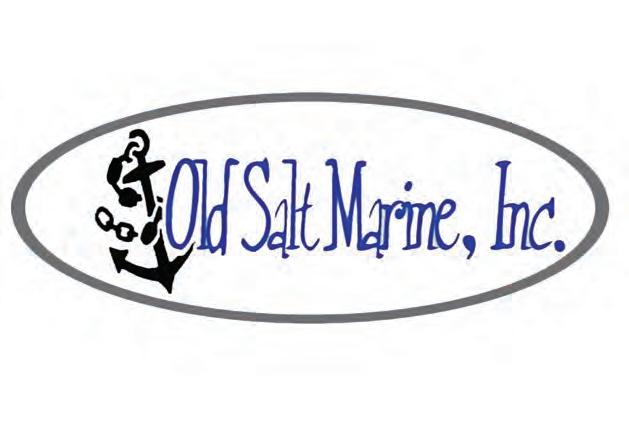



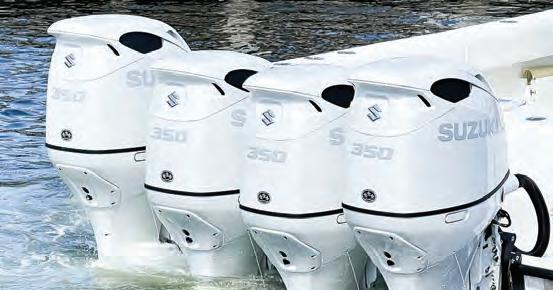






















If the weather isn’t too cold and the winds are light, January will be the time to target the nearshore migratory pelagics such as spanish mackerel, bonita, kingfish, and bluefish that are cruising through town heading south for the winter.
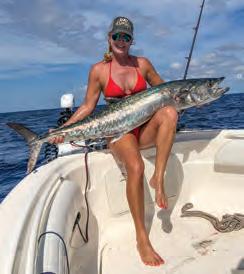
Lakeland Area
1- Big Fish Bait & Tackle 863-815-9492 6908 US Hwy 98 North • Lakeland FL 33809 wwww.CentralFloridaAngling.com
2-Champs Sports Grill 863-647-5900 6645 S. Florida Ave • Lakeland, FL 33813 www.ChampsToGo.com
3-Phillips Bait & Tackle 863-666-2248 3780 US-92 • Lakeland, FL 33801 www.CentralFloridaTrollingMotor.com
4-Stone’s Bait & Tackle 863-940-4898 2049 E Edgewood Drive • Lakeland, FL 33803
Photo courtesy Gwenan DeLozierAnchor off a nearby rock pile, throw over a couple of chum bags, and utilize clark spoons in the 00 size or diving plugs that run in the 3’ to 5’ range. If you’re going to use a wire leader make it a light one. Say, 45 lb. test. Too heavy and you don’t get as many strikes. The macks are like swimming razor blades but I usually just take my chances with a good 3’ section of fluorocarbon in the 25 lb. test range.
We are blessed, (or cursed depending how you look at it), with numerous rock piles in between Crystal River and Homosassa. These structures at times can hold a lot of fish. They can also hold onto a lower unit pretty good too.
So, if nothing happens in say 15 or 20 minutes pull up, and go to another pile. There are also a lot of limerock outcroppings 8 to 12 miles out off of the Bayport area that you can stand a good chance of hooking into some of these hard pulling fish while casting your crank baits and spoons.
If you hook into 1 or 2 of grouper have some cut up cigar minnows, sardines, or pinfish on board. Toss a good 2 handfulls over the rocks to really start a feeding craze and watch the action happen.
We caught several nice bluefish also this time last year in the same areas. It can be a lot of fun because if the cold water temps shut down the inshore trout and redfish bite, go have you a mack attack.
Captain Rick Burns can be contacted at 352-201-6111 • www.reelburns.com
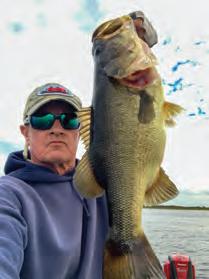
Lots of things to write about on the Kissimmee Chain for the New Year.
The exceptionally high water table has created many new opportunities to fish in areas that normally wouldn’t be accessible by boat in years past. On the other hand, a high water table scatters the fish everywhere. Here is what you can expect. Wherever you found fish one day there is a better than average chance that they won’t be there the next day. Whatever you used to catch fish with today probably won’t work tomorrow either. As fish move in transition from one area of the Chain to another, the habitat also changes. With changes in habitat comes changes in what fish are foraging on. Your success depends on covering as much water as you can with your trolling motor and being very diversified in what you cast at these fish. When you find fish don’t leave them to go look for more. Instead, systematically pick that area apart. If you find something in your tackle box that works- don’t change it. When you lose your bite then go look for other areas in the Chain with similar habitat and repeat the process.
For live bait anglers, I suggest slow trolling your baits in and around large areas of isolated cover. I expect those areas to hold larger Bass for the Winter this year. Study your fish when you catch them on the Chain this year. This also is critical to your success. Darker fish with lice on them is a real reliable indicator of fish taking up residency in a given area. Lighter color fish with little or no lice are transition fish on the move. When you find both in a given area those are transitional fish getting ready to take up residency in addition to the resident fish already there. I suspect this occurs because there is a lot of forage in those areas. Figure out what the forage is and now you hold the key to the vault.
Capt. Dave Ochs / Kissimmee Chain Fishing (863-605-2181)
Back Water Fishing Kissimmee • Lake Wales
5-North Lakeland Outfitters 863-608-1513 848 W Daughtery Road • Lakeland, FL 33389
Winter Haven Area
6. Caribbean Bait & Tackle 863-292-9755 1004 N Lake Howard Dr, Winter Haven, FL 33880
7-Capt. Scott Taylor 855-354-8433 Official Guide for VisitCentralFlorida.org & Camp Mack’s River Resort Scott@TMCGuideService.com
8-Hillman Motors Inc. 863-967-4628 2701 Havendale Blvd. NW • Winter Haven FL 33881 www.hillmanmotors.net
9- Marine Supply of Winter Haven 863-297-7003 1700 3rd St SW • Winter Haven, FL 33880 www.MarineSupplyBoats.com
10- Millers Fiberglass 863-551-1551 1505 Lake Shipp Dr, Winter Haven, FL 33880 www.facebook.com/Millers-Fiberglass-Repair-157407427716301
Lake Alfred Area
11-Ron's Tackle Box, LLC 863-956-4990 380 S. Lake Shore Way • Lake Alfred, FL 33850 www.ronstacklebox.com
Haines City Area 12- Crossed Industries 863-439-7616 31499 Highway 27 • Haines City, FL 33844 www.crossedindustries.com
Lake Wales Area
13. Sweet Ella’s Produce 863-223-8775 326 FL-60, Lake Wales, FL 33853
14. Bridgemasters 863-676-1009 2131 FL-60 • Lake Wales, FL 33898 www.fishermanscandystore.com
15. Captain Dave Och's Backwater Fishing Adventures 863-605-2181 • Lake Wales, FL 33538
16. Guy HarveyCamp Mack Lodge, Marina & RV Resort 863-696-1108 • 14900 Camp Mack Rd • Lake Wales, FL 33898 www.Guy HarveyCampMack.com
Frost Proof Area 26- Erwine’s Marine 863-635-4492 250 S. Scenic Hwy • Frostproof, FL 33843 www.ErwinesMarine.com
Placida Area 27-Fly Em High Charters 863-224-1418
Capt Bobby Woodard 6499 Gasparilla Rd • Placida, FL 33946 www.Captain-Bobby.com






















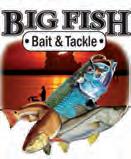






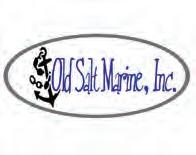












their anal n. ese long skinny sh are built for speed and can reach max speeds of about 70 mph.
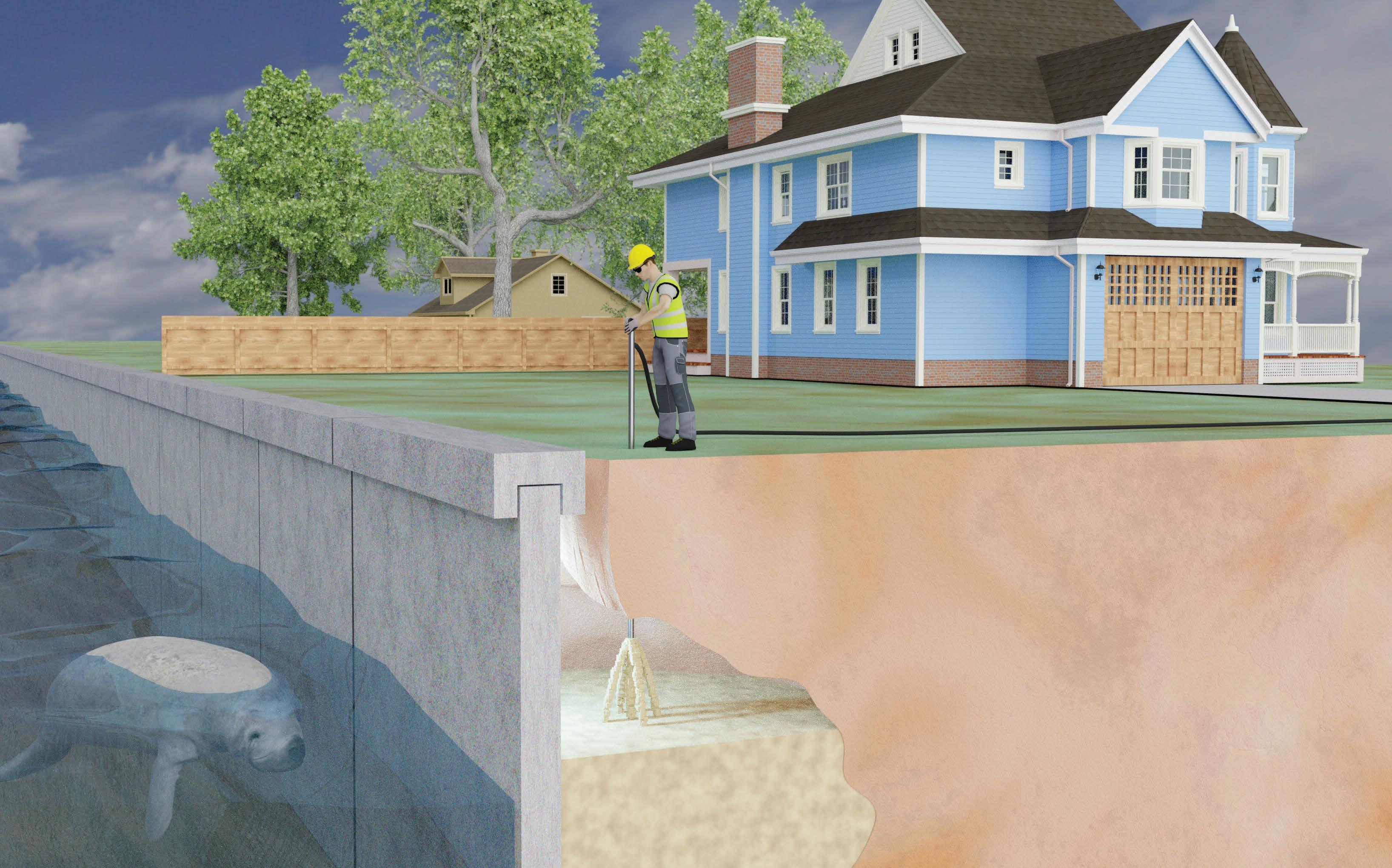
Atlantic sail sh participate in seasonal migrations along the coast of America. Some sh will stay where they are, but most move northward in spring and south during the winter. is is due to the bait schools following the cold cycles. As soon as it gets hotter up north, they migrate. Once winter sets in, they return to Florida. Sail sh spend most of their time in warm surface waters of the epipelagic zone of the ocean. ey make frequent nearshore forays and congregate where water temperatures are in the 70 to 80 degree range.
ey begin spawning in spring, and this can occur as early as May or all the way into the fall. Like many other pelagic sh, sail sh use a process called external fertilization, or broadcast spawning. Males release sperm and females release eggs into the water current. Each female can produce about 4.5 million eggs. Once the sail sh hatch at around an eighth of an inch, they grow rapidly to about 6 pounds within a month. eir growth slows once they reach about 4 feet in length.
Capt. Charlie Stuve put me on my rst sail sh. He runs Native Guide Fishing Charters out of Jupiter, Fla., and sail sh are a favorite winter target for his clients.



“I suggest live baiting,” said Capt. Charlie. “Goggle eyes are the most popular bait, but other baits work, as well. Kite shing is preferable with goggle eyes, but I also do well slow bump-trolling edges. Live thread n herring, Spanish sardines and pilchards are my favorites while dri ing on a color change.

Now that the cold has set in and will be here for a bit, we once again change focus on what we are catching. Most larger sh tend to slow down during winter months since it takes more energy out of them; however, this is not the case for sail sh. As long as you are brave enough to venture into the rough winter seas, you’ll be sure to get on the bite.
Sail sh are the sleek and slender member of the bill sh family. eir name comes from the extremely large dorsal n that extends over almost their entire back. ey also have long pelvic ns, which stretch almost to
“Depths can vary, so don’t use yesterdays information because conditions constantly change. Sometimes when the bite is slow, I like to bottom sh and y a kite downwind. at way you stay busy with the bottom action and when you least expect it you have a sail sh on your kite.”
e IGFA world record for Atlantic sail sh weighed 142 pounds, 6 ounces and was caught in Lobito Angola in 2014.
Emily Rose Hanzlik holds 56 IGFA world records in various categories. She hails from West Palm Beach, where she has a part time Bow n Guide Service as well as shing classes for Jr. Anglers. Find her on Social Media @emilyhanzlikoutdoors.


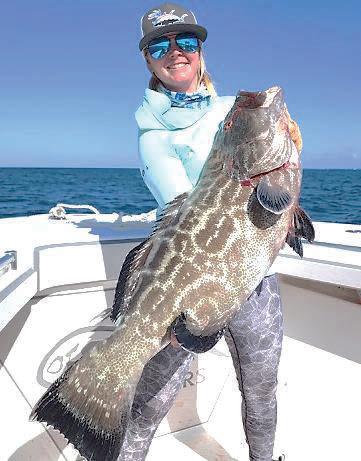
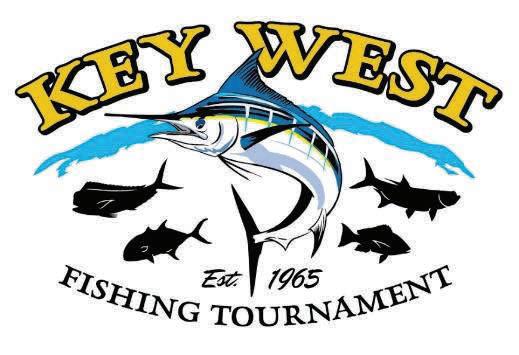








The FWC approved rules to help conserve Gulf striped bass in Wakulla County’s lower Ochlockonee River at the Nov. 30-Dec. 1 commission meeting.

FWC research has identi ed high rates of recreational harvest of brood sh (breeding sized) Gulf striped bass, and sta proposed rule language to change the harvest length limit. e bag limit of three sh per day for striped bass will remain in e ect. e proposed change to the length limit would change from 18 inches minimum size to no minimum size with only one sh allowed over 24 inches. Gulf striped bass populations are dependent on stock enhancement via hatchery production and protection of these larger-sized striped bass is necessary for the continued survival of the species.
“ is rule change is a positive step for Gulf striped bass, an important sport sh in Florida,” said FWC Commissioner Gary Lester. “We appreciate sta working with stakeholders on these ongoing conservation e orts for the future of this shery.”

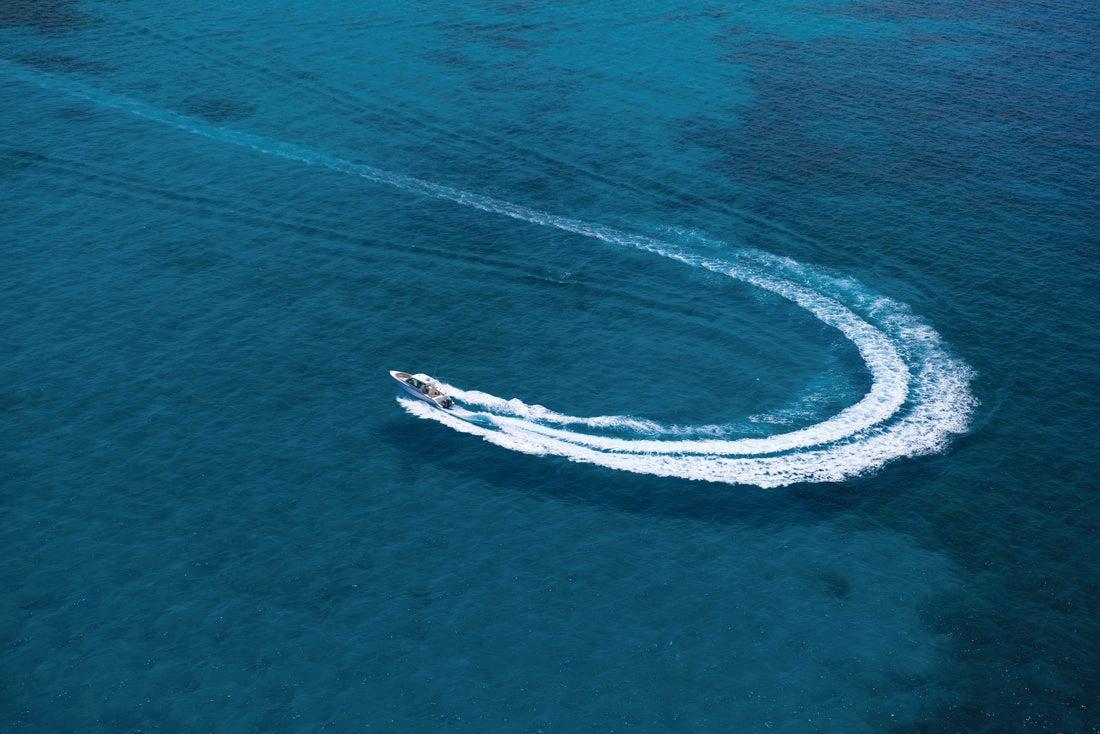
Sta held public meetings with local anglers to discuss research and management options for this shery at Lake Talquin in May 2022 and an additional meeting in November to discuss the rule language. Anglers were supportive of using regulation changes as a management tool. Further stakeholder engagement will occur on this rule.
Email Christopher.Paxton@MyFWC.com with questions, or visit the striped bass pro le on MyFWC.com.

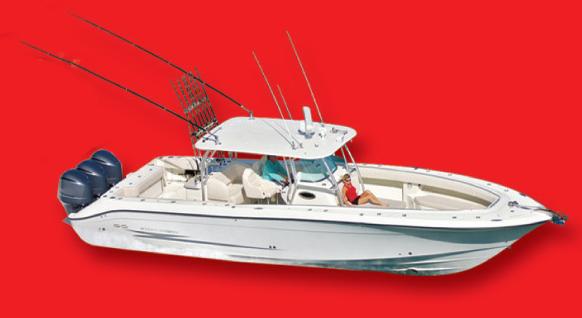
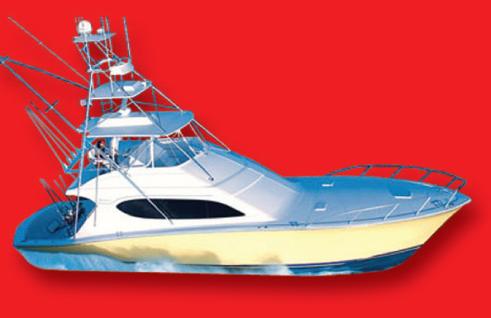














Let’s grow with Florida together.
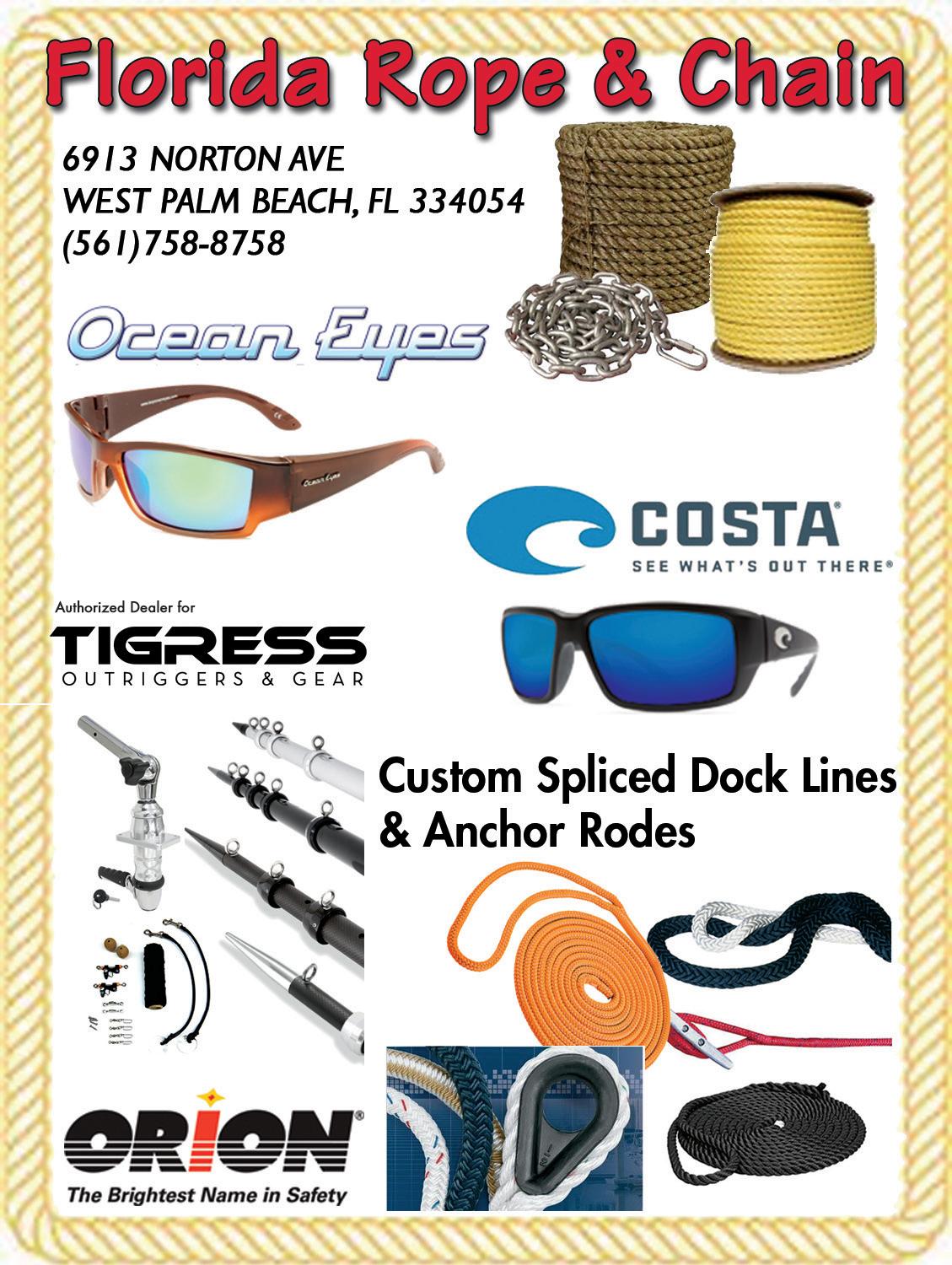



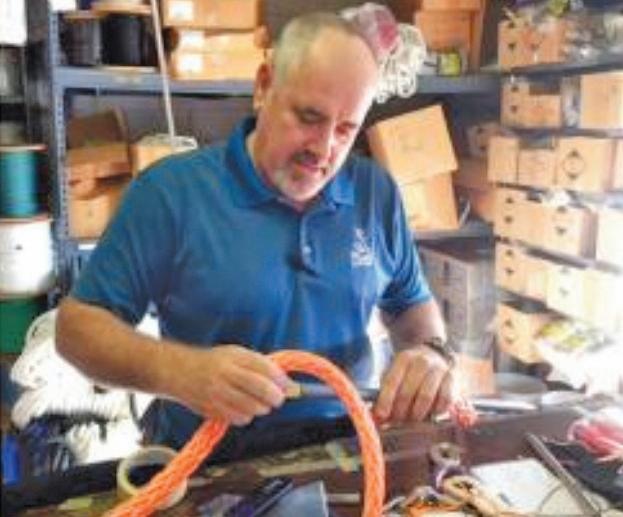
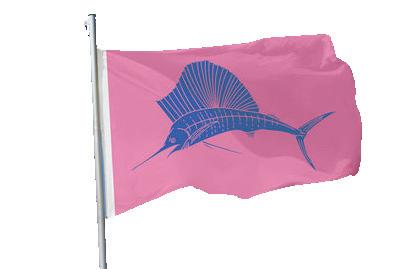

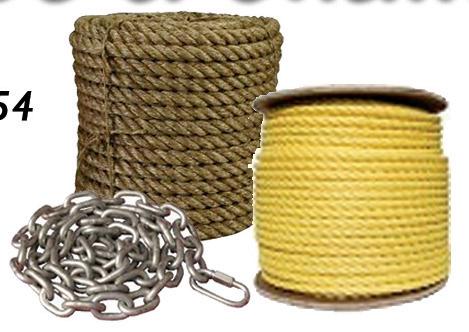



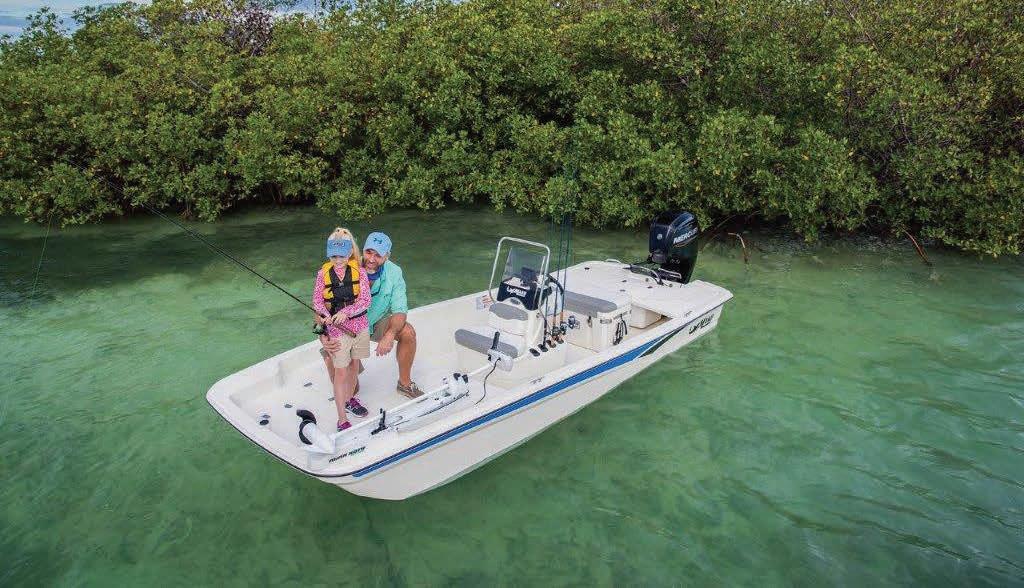

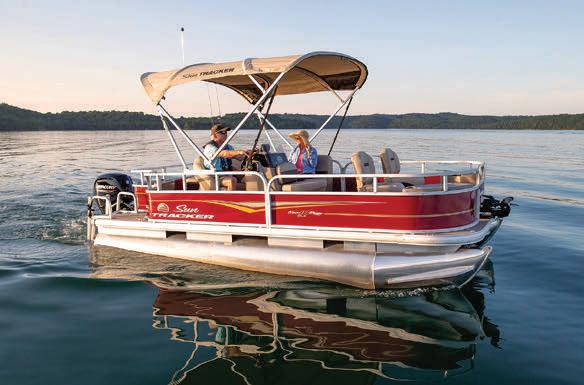
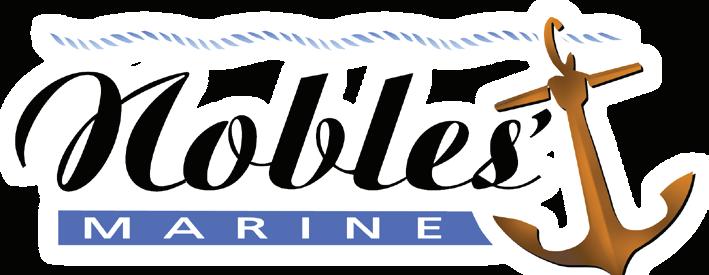







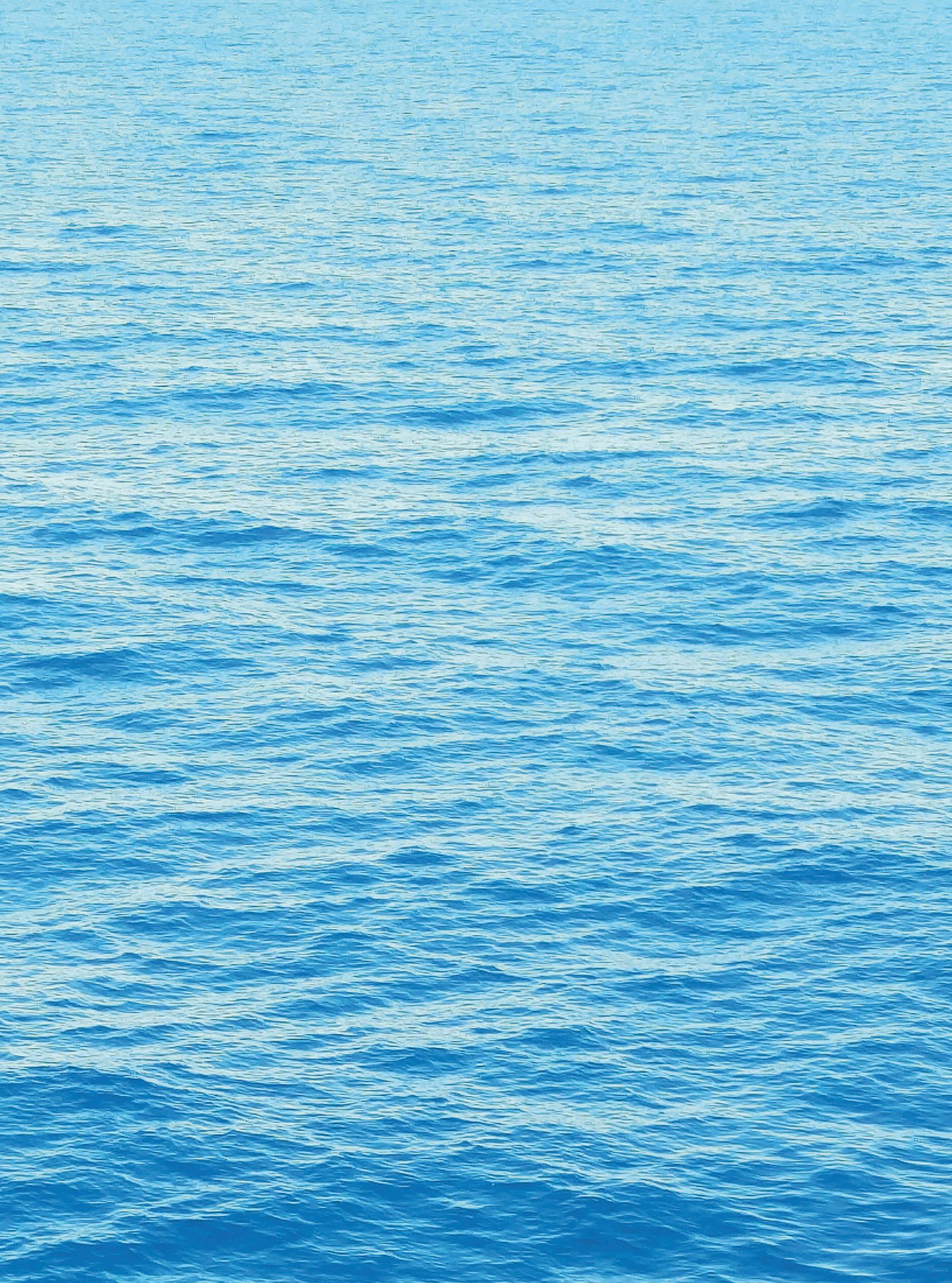
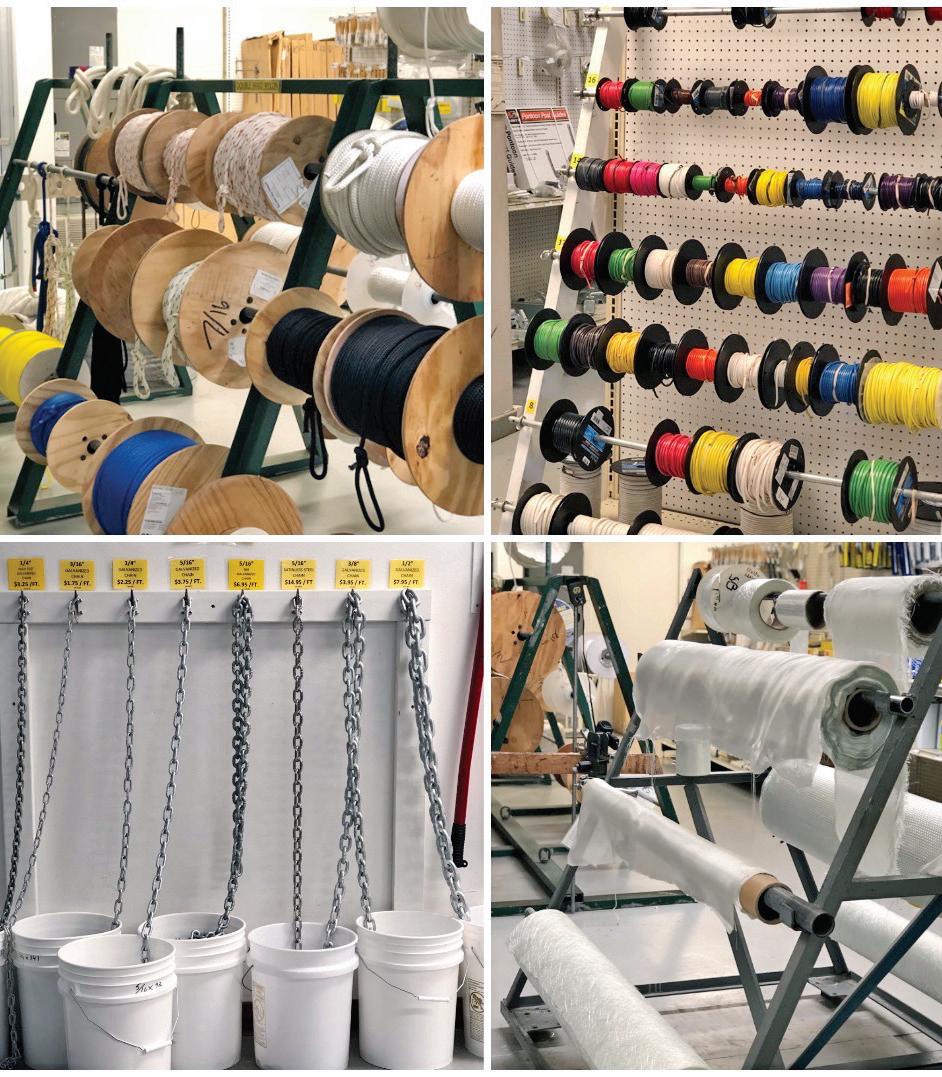
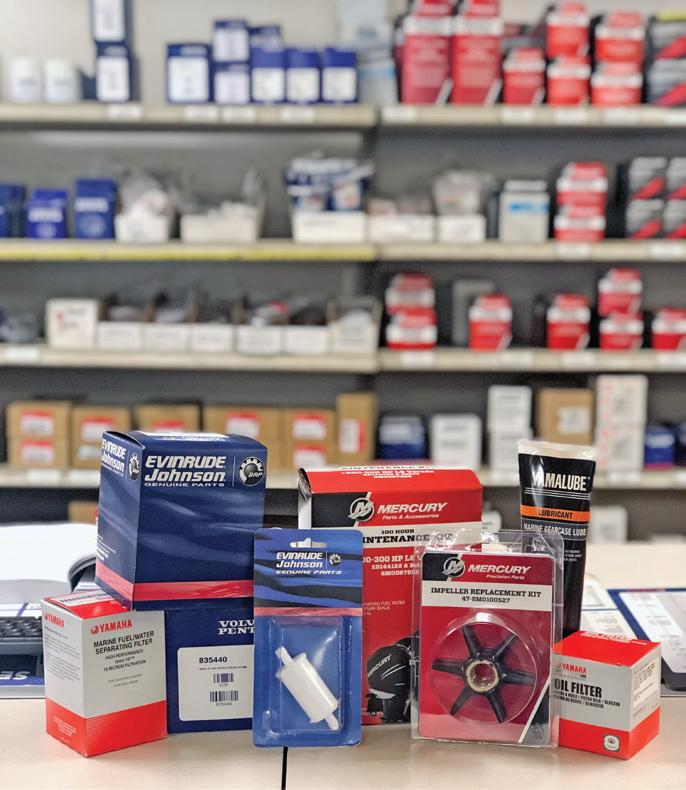















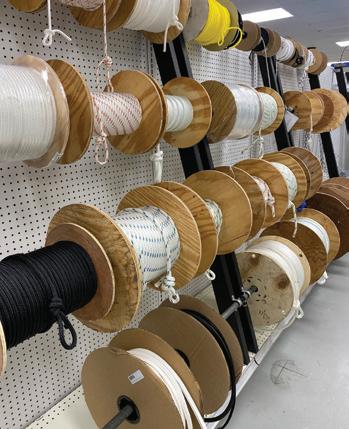





Berkeley County is a wonderland for outdoor enthusiasts, sports bu s, adventure seekers, and water lovers. From exemplary fishing for striped bass, or a trophy largemouth bass, to our hiking trails and water activities, along with scenic outdoors where you can catch a glimpse of white tail deer and gators, Berkeley County has activities to fit all visitors and families.

Learn more about Berkeley County at: exploreberkeleycounty.com



Researchers have designed and tested a new style of hook that takes catch-and-release to a whole new level. ese “bite-shortened” hooks are intended to allow sh to “release themselves” without being handled by the angler.

Dr. Holden Harris, a postdoctoral researcher at the University of Florida’s Nature Coast Biological Station, was the mastermind behind the study. In his write up on Hook Line & Science, a North Carolina Sea Grant blog, he promoted the bene ts of e cient de-hooking and minimal handling of caught sh to considerably improve chances of survival for released sh. e hook he tested is a modi ed jig, which researchers clipped at the point, so that this “bite” portion of the hook—the business end— was reduced in length from 15 mm to 10 mm. e simple modi cation just clipped the barb and vertical length beyond the bend of the hook before it was re-sharpened. Harris tested it against a standard jighead as well as a jighead with the barb led down on 150 spotted seatrout. ey went shing with all three jigheads, reeled in the sh and then allowed the sh to op around boat-side until they either did or did not come unhooked.
“We found promising results for the bite-
 HARRIS
HARRIS

shortened modi ed hook, which enabled anglers to land 91 percent of hooked spotted seatrout and then release 87 percent of those sh without direct handling,” Harris wrote. “In comparison, the self-release success rates were 47 percent using barbless hooks and 20 percent using standard, unmodi ed hooks.”
Additionally, Harris found that smaller seatrout were able to “self-release” at higher rates than larger ones.
Coastal Angler contributor and seatrout-on-














arti cials guru Michael Okruhlik has written on his use of barbless hooks when targeting pods of trout crashing bait. He said the ability to quickly and safely release sh without taking them out of the water allows him to get back in the action faster.
Maybe anglers would use a hook designed to let sh come unbuttoned?
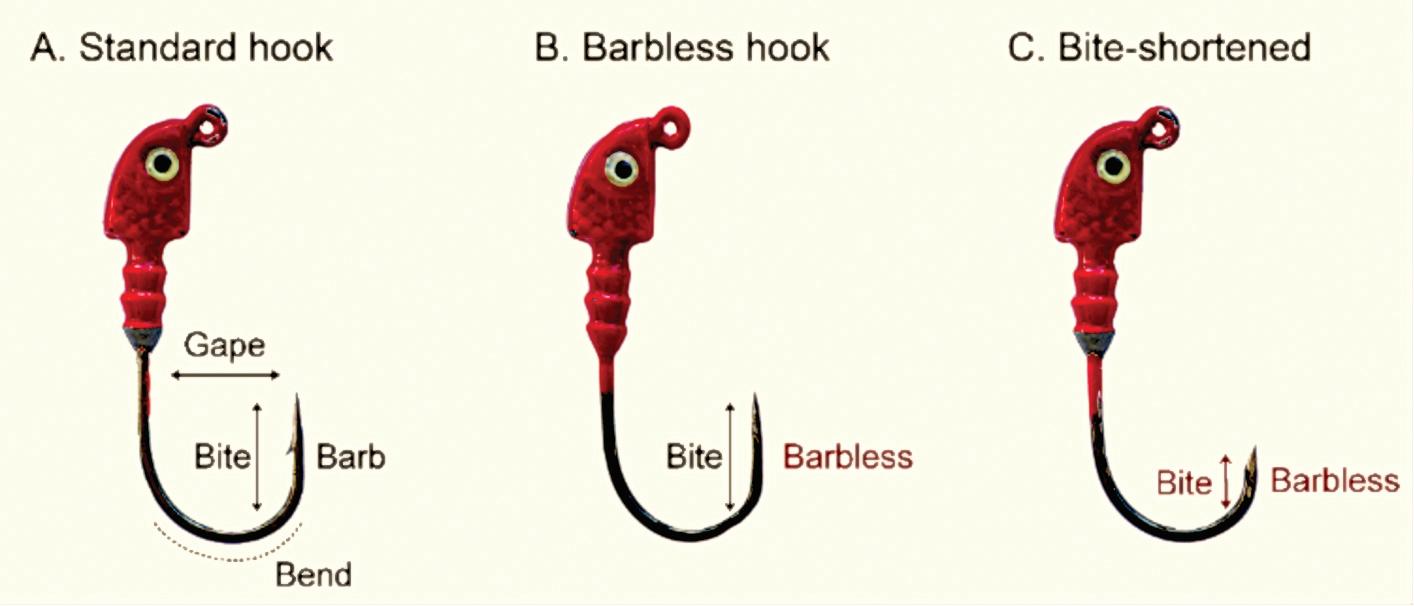


For a video of this hook modi cation, see https://youtu.be/VC23oNikyc8


Every year in Basel, Switzerland, the world’s best-known luxury watchmakers gather to display their new timepieces. It’s a great event for spotting timepieces that standout–– in performance and in personality. We saw one impossible to ignore: a precision dive watch with an arresting green dial. But we also saw the five-figure price tag and knew we could bring our customers that exact same precision and stand out appeal for a whole lot less. The Stauer Evergreen Diver is that timepiece.
Built like a submersible battleship with a stainless steel case, caseback, and band, the Evergreen Diver is water-resistant down to 660 feet or 20 atmospheres, a feat facilitated by a hardened crystal and screw-down crown.
Green On Your Wrist AND In Your Pocket. You could pay an awful lot elsewhere for this verdant virtuoso, but the majority of the cost is in the big designer name upcharge. We think those guys are all wet. This is how you own a top-of-the-line dive watch without helping pay for some marketing guy’s yacht.


Satisfaction Guaranteed or Your Money Back. Wear the Evergreen Diver for 30 days. If you’re not completely happy, send it back for





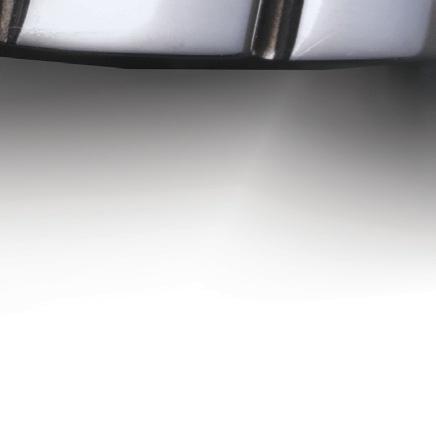

Amonster gold sh aptly named “Carrot” has been making the rounds on social media recently a er the sh was caught from a trophy carp lake in Champagne, France. UK angler Andy Hackett caught the nearly 70-pound bright orange sh from Bluewater Lakes, a heavily managed, privately owned pay-to-play shery that boasts of carp weighing heavier than 90 pounds.

Carrot seems to be somewhat of pet, but not the type you’d keep in a sh bowl. She is a crossbreed between leather carp and koi, and was stocked in the lake 15 years ago to give anglers an interesting sh to pursue.
“I always knew e Carrot was in there but never thought I would catch it,” said Hackett. It took him 25 minutes to reel in pot-bellied carp, which o cially weighed an astounding 67.4 pounds.
Carp caught at Bluewater Lakes are handled very carefully with a strict catch-and-release policy.

For more record sh, visit coastalanglermag.com.


Some cold but very fun shing days are ahead, and a Trapstyle bait is my absolute favorite way to sh this time of year. Typically sh group up in winter, and whether that be bait sh or bass, there are opportunities that make lipless crankbaits absolutely deadly!
rowing a lipless crank around areas where sh are chasing bait or where they are grouped up has caught lots of bass and some big ones. Even casting this bait as a search bait can work wonders. ere are so many options for lipless cranks that it can get confusing. I’ve experimented plenty, so I hope this article helps.
Traps range from ¼ oz. up to 1 oz. in weight, and every size can be used di erently. I pick sizes depending on the depth I’m shing or the depth of the structure, and I also consider the natural bait that is prevalent in the area. If you’re shing shallow or around tiny bait sh, a ¼-oz. size will be the best bet. A ½-oz. is usually my goto. It’s great for the mid-range depths of 5 to 10 feet, and it imitates a range of bait sh sizes.
A ¾-oz. is a bit bigger, and I don’t throw it as much, but it certainly has its place in 10 to 20-foot depths.


Remember, you can always vary your retrieve to get these baits higher or lower in the water column.
Color is another key factor. Ninety percent of the time, I sh a bait sh color. Whether it’s a shad, shiner or bluegill pattern, natural colors always work for me. I also throw orange or red a lot in winter. ese colors imitate craw sh, and they work where craw sh are prevalent. Match your bait color to the forage in the lake.
e last factor for lipless baits is sound related. ey come in silent, multi-rattle or single-knocker versions. I go silent for very clear water and heavily pressured sh, when appearing natural is important. e multi-rattle baits make a lot of noise, and the commotion draws strikes. My go-to, though, is the one-knocker style. is sound is unique and a little deeper pitched. I feel like sh, over the years, have become accustomed to the loud versions. I nd the single-knocker gets a few more bites in most situations.
With treble hooks, rod selection is important. You just reel into the sh when you get a bite, and this means your rod needs a solid backbone to drive those hooks and also a good amount of tip for keeping sh on during the ght. My go-to rod is a 13 Fishing Omen Black 7’4 Medium Heavy Moderate. e 13 Fishing Concept A 7:5:1 is a perfect reel for this application. I sh 15- to 20-lb. Seaguar Invizx line, depending on the structure I’m shing.
I hope these Trap tips help you put a few more sh in your boat this winter!






Tyler Woolcott is a professional tournament angler and guide. Check out his website at www.tylerwoolcott shing.com.




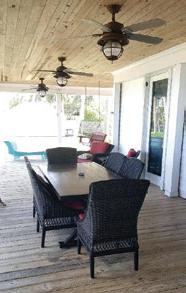
ANew Jersey angler eked out a new state record for albacore (long n) tuna in October when he boated a 78-pound, 2.4-ounce long n that bested the previous 1984 record by 3.4 ounces.
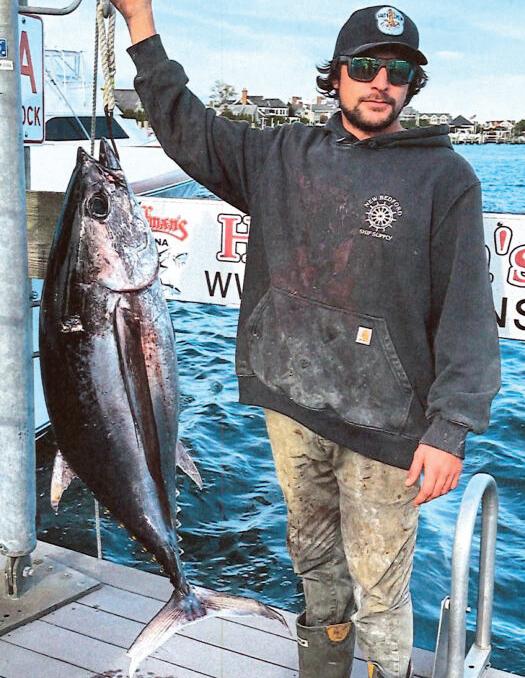
Matthew Florio, of Brick, N.J., is a commercial scalloper and he was shing with the rest of his scalloping crew aboard the Luna Sea at the east elbow of Hudson Canyon, the largest known underwater canyon o the east coast of the U.S. ey were at least 75 miles o shore and chunking for yellow n tuna, which is a technique that involves cutting up a bunch of butter sh and throwing them overboard before following up with hooked chunks of butter sh. e crew was already having a good day with yellow ns when Matthew hooked into his big albacore. He battled it in with a Kevin Bogan 30 Stand Up rod and a Penn 30 reel loaded with 60-pound mono lament. e sh measured 48 and 3/8 inches long and had a girth of 37 inches. e previous record was a 77-pound, 15-ounce long n caught in 1984 by Dr. S. Scannapiego in Spencer Canyon.
For more record sh, see coastalanglermag.com.


Now that Jack Frost has bay temperatures thoroughly chilled, only diehard lure chuckers will be found stalking the ats. Most of us have one thing in mind this time of year, catching a trophy trout. Here is how I approach my quest for that dirty 30-incher.
When water temperature stabilizes in the COLD range, all the migratory forage ees for warmer pastures. e bays are le with larger mullet as the primary food source for prized speckled trout. is is the time of year that I pull out my larger lures. is could be a longer length, a wider pro le, or both. is doesn’t have to be a 12-inch lure that is no fun to cast all day, but I do upsize from my typical 3- and 4-inch lures that I use most of the year. We have all seen a 25-inch trout with a 15-inch mullet in its belly, so they will eat something huge, but giant baits aren’t as fun to sh.

My con dence lures this time of the year are typically a 4-inch wide-pro le slow-sinking lure or a 5-inch bulky body paddletail. Since plastisol is buoyant, the bulky lure will have a slower sink rate, which I prefer under most conditions. e
slower sink allows for dual bene ts this time of year. Logically, the slower sink rate matches the slower mood of a cold sh. Also, I spend a lot of time targeting sh over shallow grass in knee-deep water. A slower sink rate keeps my lure in the strike zone longer before it disappears into the grass.
weedless hook. Depending on the conditions, I might go weightless or with a 1/16- or 1/8-ounce jighead. e weedless version keeps me out of the grass, it lessens the opportunity for my cold, less-dexterous hands to be impaled by a hook, and most of all, it does less damage to the trophy sh that I am targeting.
Areas I target will be near deeper water, have so er bottom, have visible forage, structure and hopefully be lowertra c areas. While planning trips, I take into consideration moon phase, current conditions and recent conditions when determining where to sh.
I have never caught a trophy trout by accident. I don’t know if that is lucky or unlucky, but every trout I have landed over 27 inches was on a day when I set out speci cally targeting larger sh. Case in point, if you want to catch trophy trout consistently, you must make the e ort to target them, sh where they live and be attentive to details. I know numerous anglers have caught large trout with no e ort, but most don’t catch two.


I t my 5-inch rattling paddletail with a

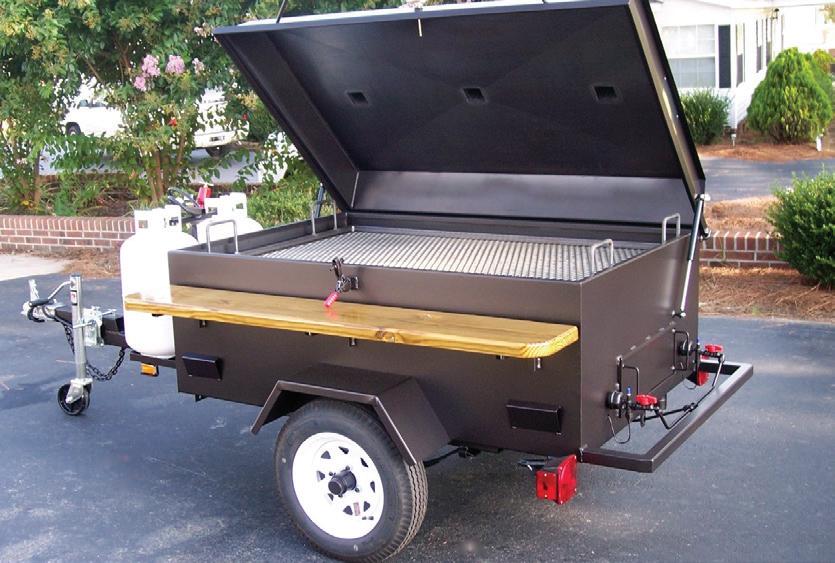
Capt. Michael Okruhlik is the inventor of Knockin Tail Lures®, and the owner of www.MyCoastOutdoors.com.
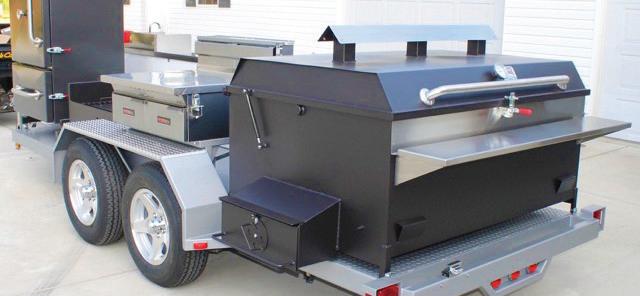
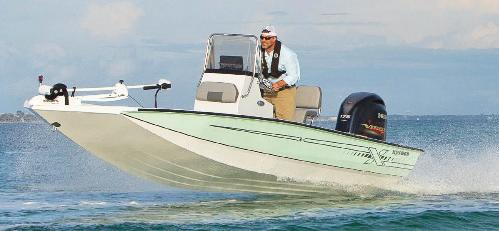
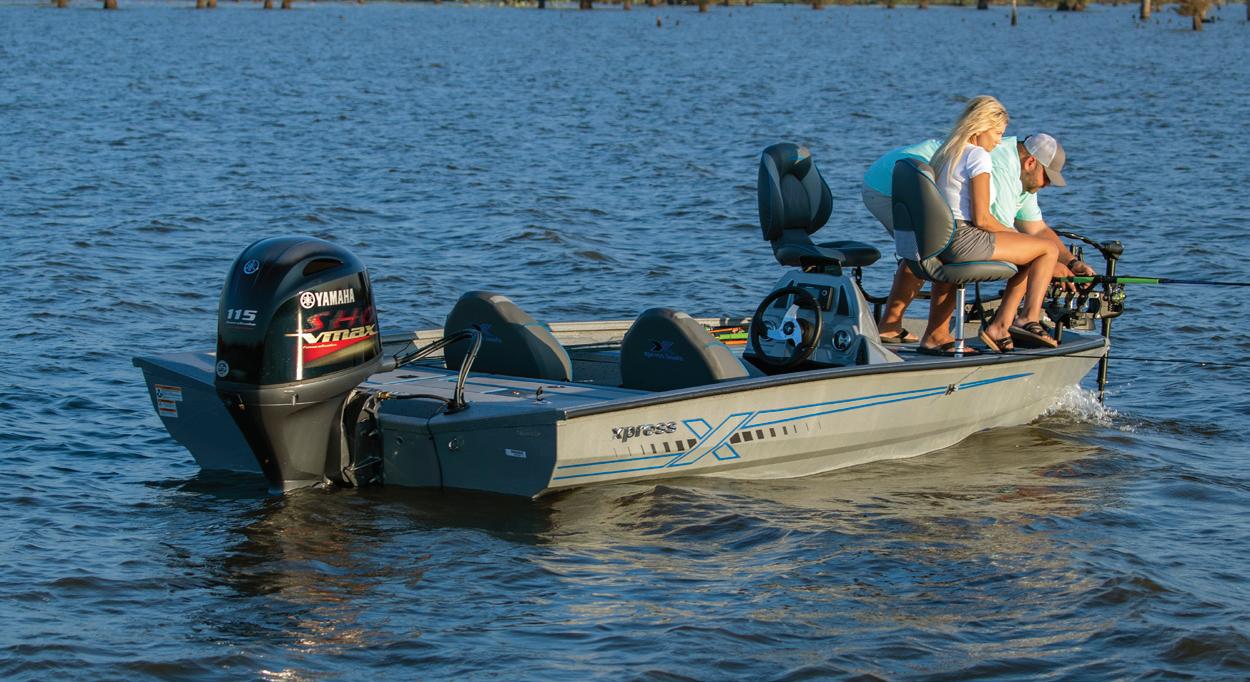


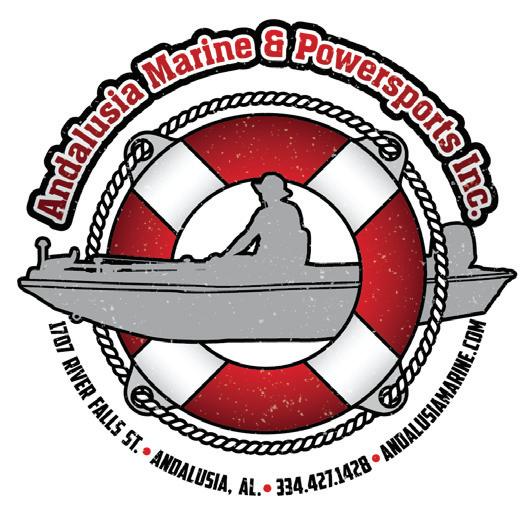




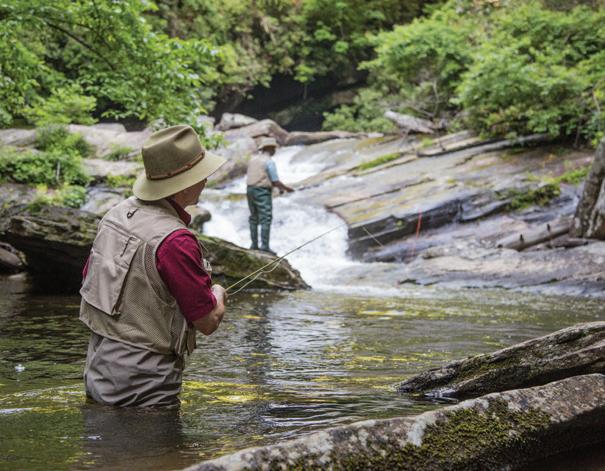





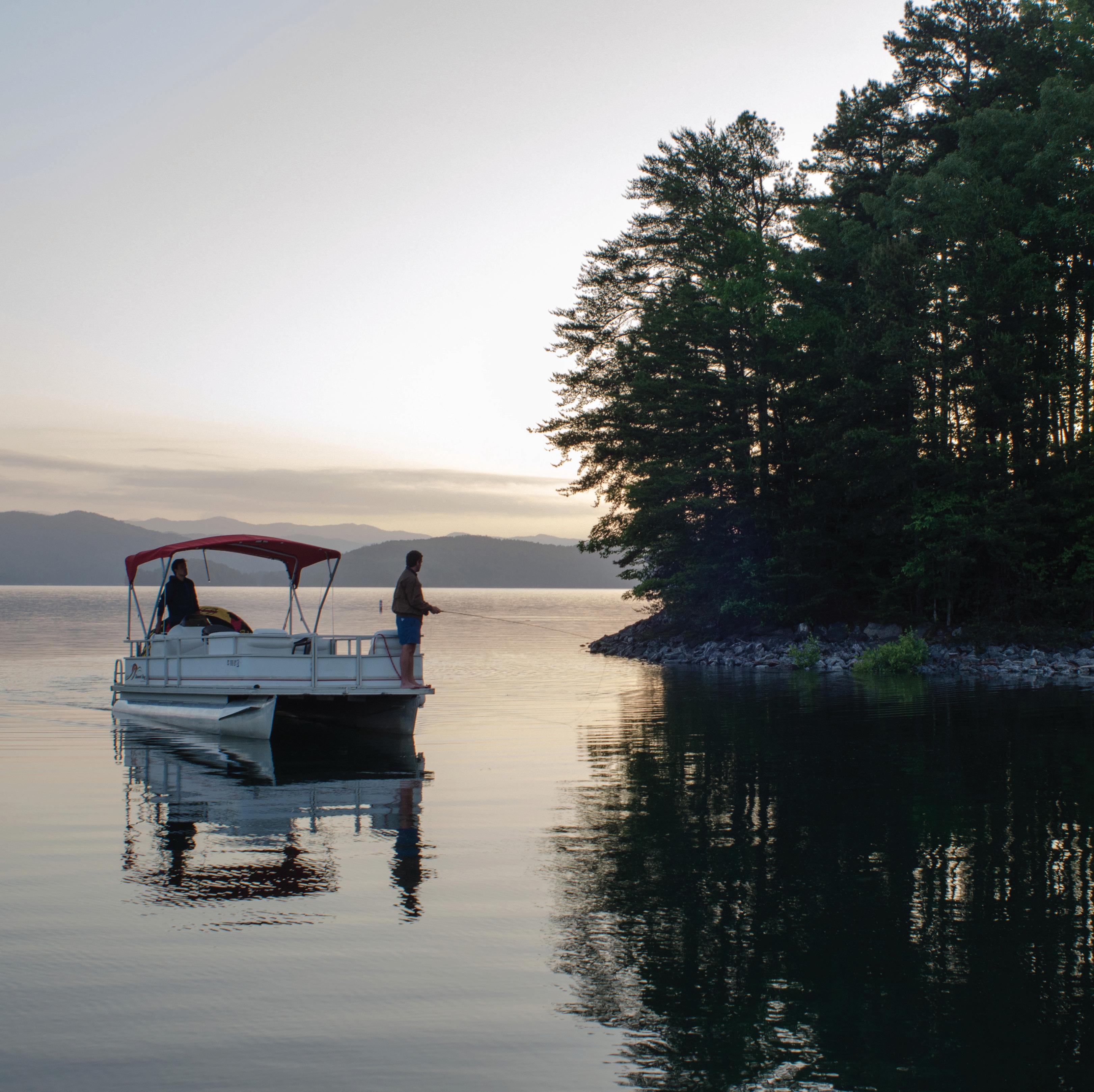
Every season is the best season to explore the many treasures in the Upcountry.

